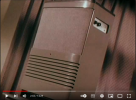Pearljam5000
Master Contributor
- Joined
- Oct 12, 2020
- Messages
- 6,701
- Likes
- 8,055
- Thread Starter
- #5,041
Can't decide which is nicer 


On the above basis, could it be correct to conclude that some loudspeakers without (on-axis) magnitude response corrections can sound "better" by virtue of the acoustic properties of their dispersion patterns?...a lot of magnitude corrections have unintended effects off-axis (owing to directivity behavior) and broad-stroke is pretty much all you can do without drilling down into controlling the dispersion patterns of the drivers.
Completely OP but curiosity hits me hard now and I have to sincerely,honestly ask:I do this for work, so I'm going to say straight out - you are incorrect here. Compression has been around literally since the dawn of electronically recorded music, and it has been used artistically pretty much the entire time. All those classic records everybody loses their minds over because they have DyNaMiC rAnGe have buttloads of compression.

Just beautiful....
If the 50's are the UK classic Spendor BC1 on steroids visually, the 150's are 100s on steroids. I'd suggest much larger rooms in more free space for the 150s thoughDamn
Now I wonder how big are the 150s
Bloody Signals never told me when they had the 100A-SE on loan
Doubt they will.PMC are now selling active amp packs to replace the passive ones in their domestic slim-boxes. I believe they're £1795 or so the pair. Absolutely no idea if they'll stick with the non-neutral balance or if some eq will be used to tame the severe excesses of non-linearity they all seem to have above 2kHz or so...
There would've been compression used in that kind of recording to prevent the lathe from bouncing or overheating in the cutting process.Completely OP but curiosity hits me hard now and I have to sincerely,honestly ask:
What about my 70 yo favorite classical stuff like the ones Lew Layton did for RCA and CSO and to my ears are some of the best recordings ever?
(ok,maybe I'm a little biased because of the people playing there but still)
(there's a video about it)
Edit: @mhardy6647 come to rescue!
(from the video)
1. are these speakers?
2. are these active speakers???
View attachment 379496
There would've been compression used in that kind of recording to prevent the lathe from bouncing or overheating in the cutting process.
There would've been compression used in that kind of recording to prevent the lathe from bouncing or overheating in the cutting process.
Compressors often act much more quickly than a human can - on the order of milliseconds.Ah, yes ... the miracle of manual "gain riding".
Jim
Completely OP but curiosity hits me hard now and I have to sincerely,honestly ask:
What about my 70 yo favorite classical stuff like the ones Lew Layton did for RCA and CSO and to my ears are some of the best recordings ever?
(ok,maybe I'm a little biased because of the people playing there but still)
(there's a video about it)
Edit: @mhardy6647 come to rescue!
(from the video)
1. are these speakers?
2. are these active speakers???
View attachment 379496
Compressors often act much more quickly than a human can - on the order of milliseconds.
So a 70 (or more) year old powered speaker.
That's true.Tape transfers to high-res digital are now available for these records. They could be from from pre-mastering stage without vinyl specific adjustments. I did hear some - tape hiss is there as is high dynamic range only limited by tape S/N ratio. Many more old records show up like that from Qobuz and other sources.